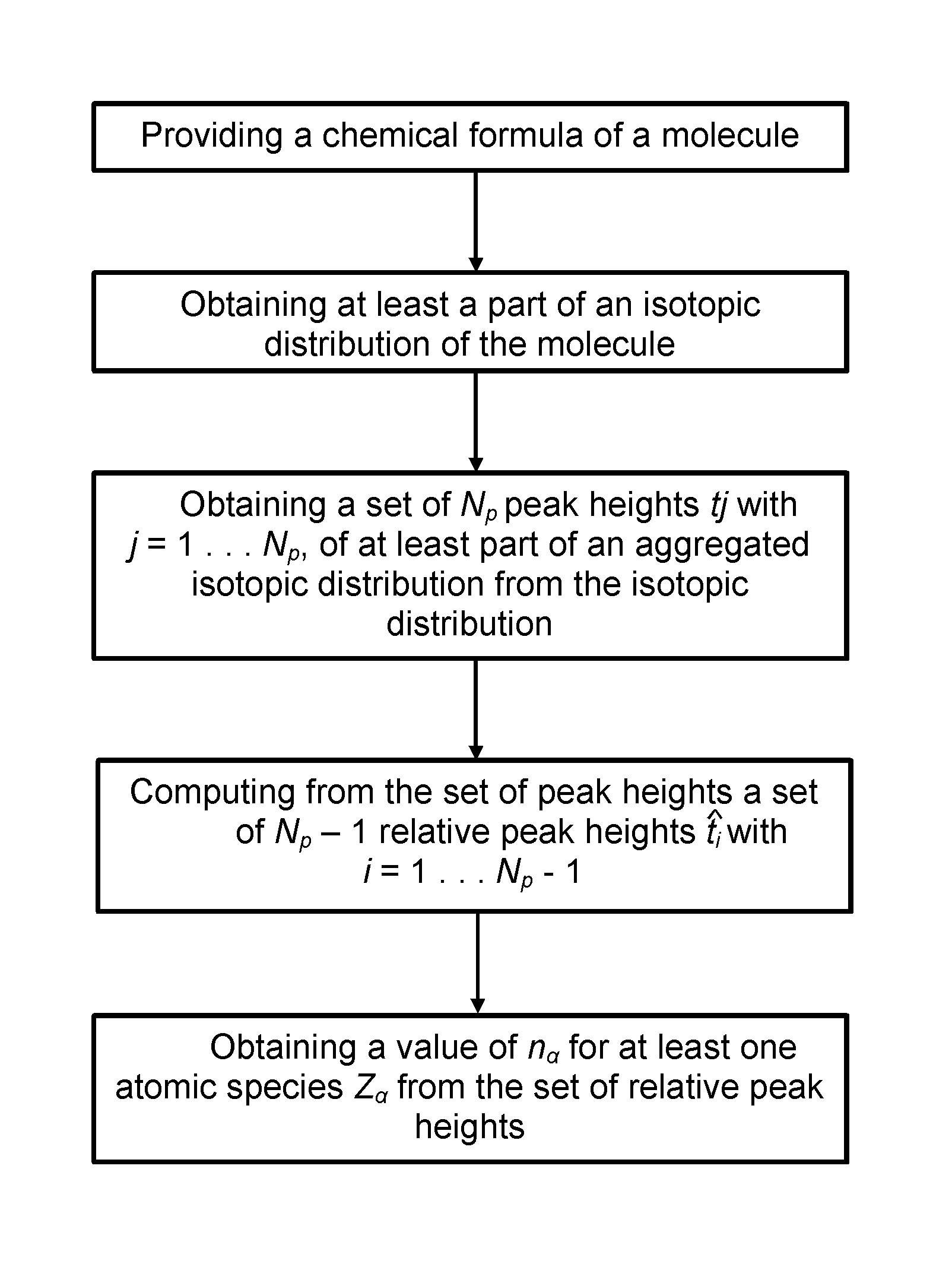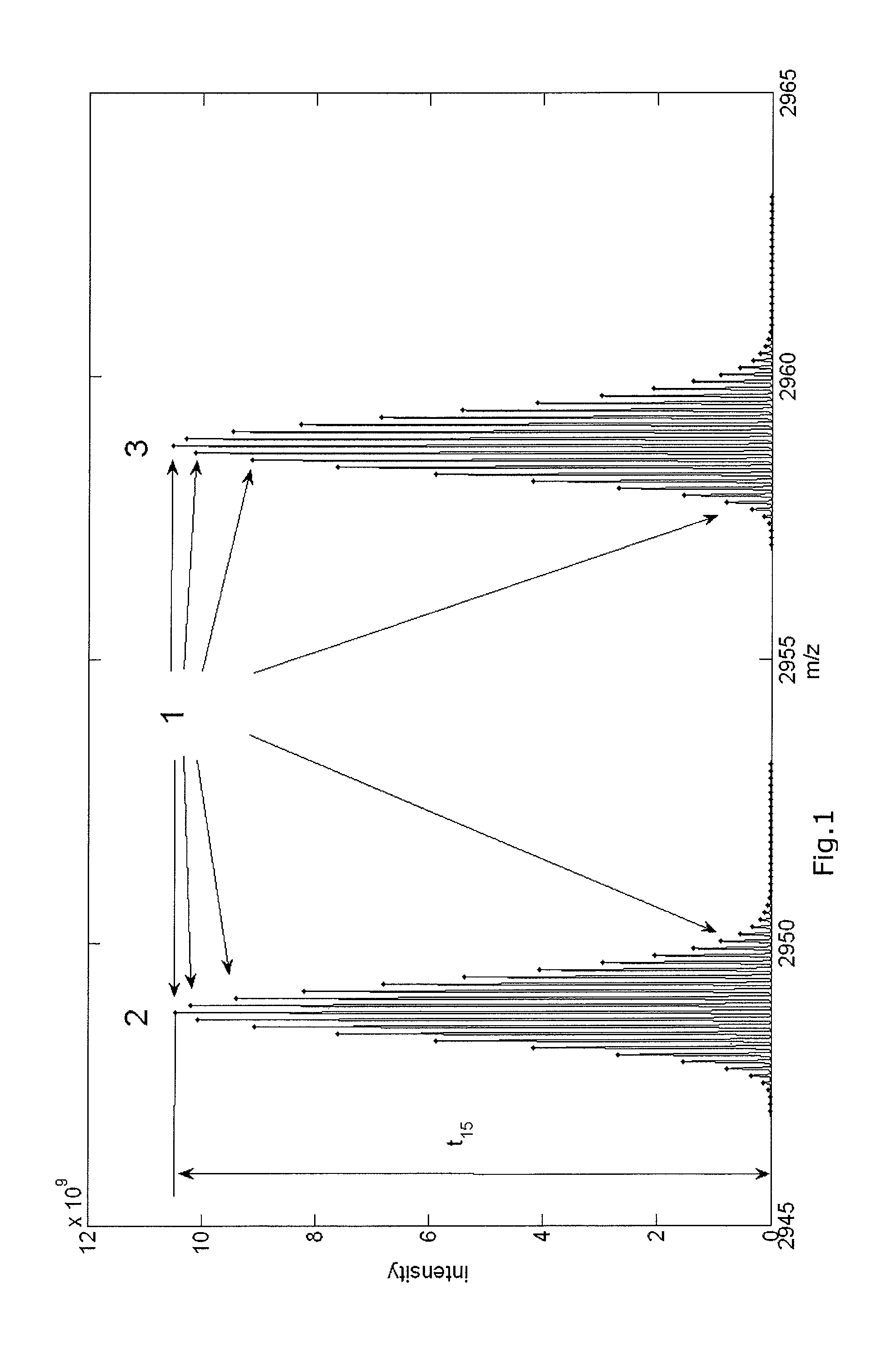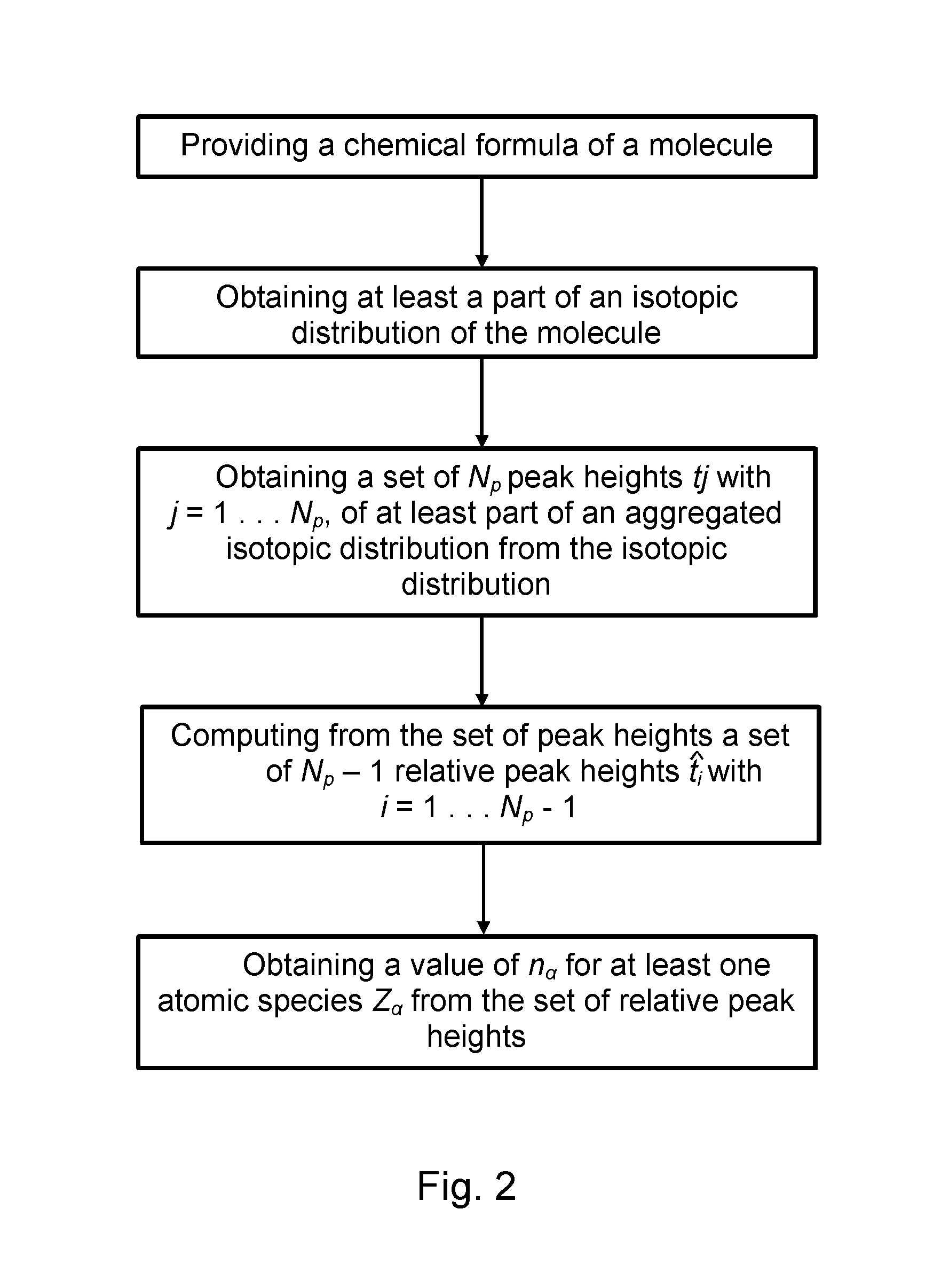Method and device for computing molecular isotope distributing and for estimating the elemental composition of a molecule from an isotopic distribution
a technology of molecular isotopes and isotopic distributions, applied in the field of computing the isotopic distribution of a molecule and its inverse, can solve the problems of difficult computation of the isotopic distribution of polypeptides, which may consist of hundreds of amino acids and thousands of atoms, and tedious and time-consuming steps
- Summary
- Abstract
- Description
- Claims
- Application Information
AI Technical Summary
Benefits of technology
Problems solved by technology
Method used
Image
Examples
example 1
[0258]For carbon monoxide, CO, one may choose A0=28, i.e. the lightest mono-isotopic variant. One then easily computes q0=P(612C)P(816O)=0.986896001. To compute the probability q1 with which the aggregated isotopic variant of CO with mass number A1=29 occurs, one can use q1=Σj=00C1,0q0 with
[0259]C1,0=-ρ-11andρ-1=rC-1+rO-1+rO-1_,wherebyrC=-P( 612C)P( 613C),rO=-P( 817O)+P( 817O)2-4P( 816O)P( 818O)2P( 818O)andr_O=-P( 817O)-P( 817O)2-4P( 816O)P( 818O)2P( 818O)
are the roots of the equations P(612C)+P(613C)I=0 and P(816O)+P(817O)I+P(818O)I2=0. This leads to ρ−1=−0.011196653942 and q1=0.011049933. In the following steps, one obtains ρ=2=rC−2+rO−2+rO−2=−0.003992862186 and q2=0.002032131, and ρ−3=rC−3+rO−3+rO−3=0.000001083120 and q3=0.000021935. These numbers are summarized in the table below:
[0260]
iAiρ−i = rC−i + rO−i + rO−iqi028—0.986896001129−0.0111966539420.011049933230−0.0039928621860.0020321313310.0000010831200.000021935
[0261]For C3H8, a similar table...
example 2
Example on the Computation of the Center Masses of the Aggregated Isotopic Variants of CO
[0264]An isotopic distribution of a sample is provided, and one wants to analyze the sample for CO. Hereby, one wants to compare part of the measured isotopic distribution with the aggregated isotopic distribution, also with respect to the center masses. Hereby, one needs to obtain this aggregated isotopic distribution and the center masses. Afterwards, one can make the comparison between the aggregated isotopic distribution and the center masses as obtained, and the aggregated isotopic distribution as derived from the measured isotopic distribution.
[0265]Previously, we have already explained the isotopic distribution of the molecule CO.
[0266]For the lightest variant, which we can take as the starting or zeroth variant, one has:
A0=A(612C)+A(816O)=28,
M0=M(612C)+M(816O)=27.995 Da,
q0=P(612C)P(816O)=0.986896001.
[0267]Note that, since it is a mono-isotopic variant, the center mass is also the isotop...
example 3
Example on the Computation of the Chemical Formula when an Isotopic Distribution is Provided
[0288]FIG. 1 presents the aggregated isotopic distribution of a molecule in a sample as observed by mass spectrometry, whereby the peaks of the aggregated isotopic variants are indicated with dots (1), and whereby the distribution at lower m / z values (2) can be attributed to the unphosphorylated molecules, while the distribution observed at higher m / z values (3) can be attributed to the phosphorylated molecules.
[0289]The molecule under scrutiny in FIG. 1 is Beta-caseine with a mono-isotopic mass of 23568.3197 Da for the unphosphorylated molecules. The molecule has a charge of z equal to 8. Therefore, the observed mono-isotopic mass in term of m / z equals (23568.3197+8) / 8. The reversed calculation can be applied to calculate the mono-isotopic mass based on the observed m / z and z. For example, the observed mono-isotopic peak is observed at 2947.04779227045 m / z. The charge of the molecules is 8, ...
PUM
| Property | Measurement | Unit |
|---|---|---|
| atomic mass | aaaaa | aaaaa |
| mass | aaaaa | aaaaa |
| atomic mass number | aaaaa | aaaaa |
Abstract
Description
Claims
Application Information
 Login to View More
Login to View More - R&D
- Intellectual Property
- Life Sciences
- Materials
- Tech Scout
- Unparalleled Data Quality
- Higher Quality Content
- 60% Fewer Hallucinations
Browse by: Latest US Patents, China's latest patents, Technical Efficacy Thesaurus, Application Domain, Technology Topic, Popular Technical Reports.
© 2025 PatSnap. All rights reserved.Legal|Privacy policy|Modern Slavery Act Transparency Statement|Sitemap|About US| Contact US: help@patsnap.com



